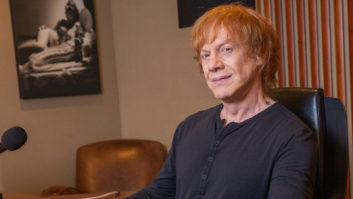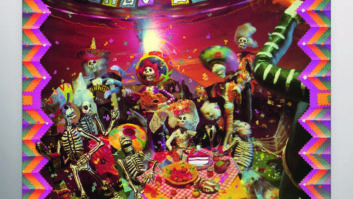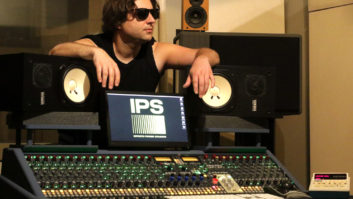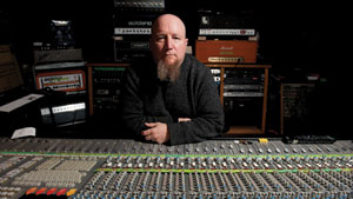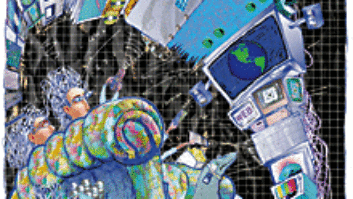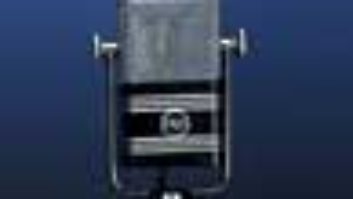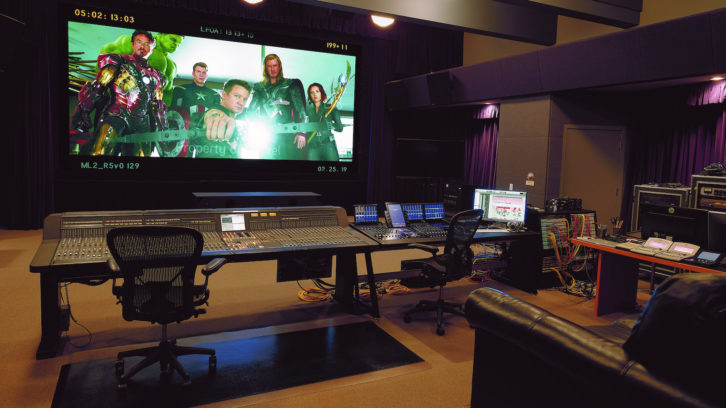
As a supplement to our four-part Danny Elfman interview, we chatted with a number of engineers who have worked with him for years.
Since the beginning of his film scoring career, Danny Elfman has been working with a select crew of engineers: Dennis Sands, Peter Cobbin and Noah Snyder, who began as Sands’ assistant. Over time, Snyder became Elfman’s go-to engineer for small-scale films and other side projects, such as Big Mess. Today, Snyder and Sands work together and apart, handling almost all of the recording and mixing of Elfman’s music in the U.S., while Cobbin works with the composer when he’s in the UK. Here, Sands and Snyder share a few insights after many years spent in the Elfman fold.
Early Days
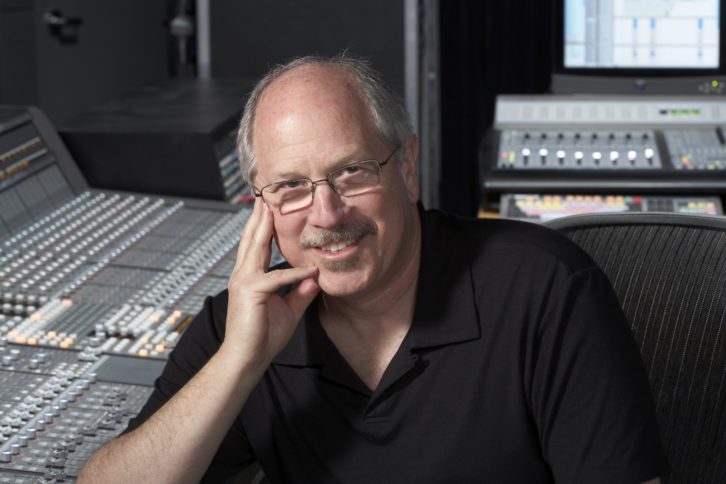
Sands: The first Danny Elfman project I worked on was Dick Tracy [1990, produced and directed by Warren Beatty]. I didn’t mix it, but I did record the orchestra, and then I think the next one was Good Will Hunting [1997, directed by Gus Van Sant]. One of my favorite scores that I worked on with him was Big Fish [2003, Tim Burton]. Regrettably, that one wasn’t a huge success, but it’s such a nice movie. The score was wonderful.
Snyder: I started working for Danny Elfman when I was a young guy with more enthusiasm than ability, but computers were just getting into the process then, and I became in charge of getting the non-orchestra stuff recorded. After everything went digital, I was thrown into the deep end of that. First, I was doing vocals for movies like Charlie and the Chocolate Factory, or I would record guitars and synths and Dennis would record the orchestra. Over time I got to mix smaller features, and then bigger ones. I realize more every day that I was lucky to learn firsthand from Dennis how to achieve the sounds Danny was aiming for.
Evolving Studio Technology
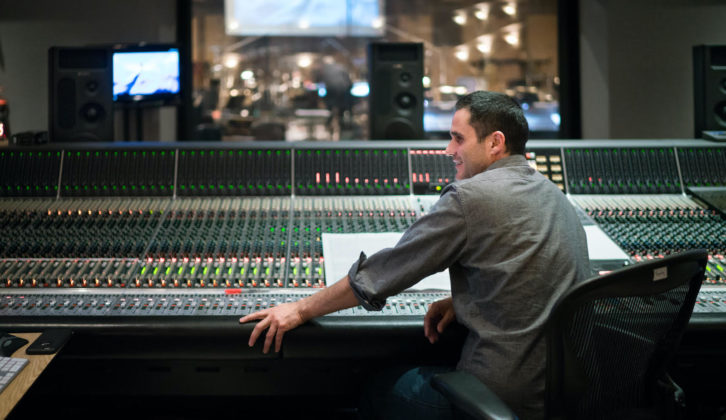
Snyder: Danny does so many different things at once, so his music has always been dense, and that translates into high track counts. On the last film that we did to tape with Dennis mixing—Tim Burton’s reboot of Planet of the Apes [2001]—we had two 48-track Sony digital machines, three 24-track Studers, and eight DA-88s, all synched up to each other. Each had its own channel for SMPTE. Each had its own click track. We had a mixer that just had all the click tracks put to it, so you could see if things were in sync. That way of working was complicated and cumbersome, so when the offer came [to go digital], it was not a hard sell!
Then around the time I was transitioning into film mixing, Danny bought the studio he has now. It was well-equipped, but he did consult with Dennis and me, and we changed some things, including ditching the console. He bought a Neve Melbourne 12-channel sidecar to replace it. Now we also have an [Avid] S3 and various control surfaces, as well as a lot of outboard gear: Grace preamps, Pultecs, Neve modules, et cetera.
The studio has a big live room and several iso rooms, and every room is wired. We can put an amp in the bathroom, and the hall makes a great echo chamber. One side of the studio was a loft previously; it’s a huge washy space, and if it’s relatively quiet outside, it’s fun to record in there, too.
Sands: That Tim Burton Planet of the Apes movie might’ve have been one of the largest recording setups we ever had. Now we record to one or two Pro Tools systems, so the footprint has decreased substantially, and beginning in 2005, I’ve been able to mix in my own studio, near where I live in Santa Barbara.
It’s just a great space. My wife found it, and I rented out the studio before eventually taking over the whole two-story building. There’s the studio, a conference room and an iso booth. I have Dolby Atmos Cinema and home theater capability, plus 7.1 and 5.1, so I can do pretty much anything. I have several sets of monitors: a large Meyer Sound film chain for doing theatrical mixes, and I use PMCs for stereo.
Recording Vocals
Snyder: Danny is not a gear guy, but he knows how he wants his voice to sound. A good example is, we were recording his vocal for a song in the Disney movie Meet the Robinsons [2007] at Signet Sound. I put up one of their awesome [Neumann] U47s. He walks in and he spoke into the microphone for a nanosecond and said, “This sounds like an old microphone, but I want it to sound modern.”
Instantaneously, he not only diagnosed exactly what he was getting back in his ears, but also knew what he wanted. It was the same with Big Mess; he wanted it to sound immediate and modern, and most of that he did himself with a Neumann KMS105 mic and a Grace preamp, and he got a very clean performance. On the other hand, when we were recording vocals on Silver Linings Playbook [2012, David O. Russell], which has all these beautiful Beach Boys-y harmonies that were all Danny, we used a more old-school vocal mic.
Elfman’s Unique Career
Sands: You don’t always see people in the upper echelon of composers who will actually seek out smaller projects, but Danny does, and I’ve always admired that about him. He looks for and enjoys working with younger directors with interesting projects. It gives him the opportunity to work on a more musically intimate scale and experiment more than when he’s doing a high-visibility tentpole movie. It’s all creative work, but sometimes big budgets come with a lot more pressure.
Also, sometimes those small things lead to bigger success. Good Will Hunting was kind of under the radar at first, but such a good film— very smart with strong characters and dialog, beautifully directed. It just worked on so many levels. Or look at Pee Wee’s Big Adventure or Big Fish—when you remember that Danny also works on the big Marvel action movies, you get an impression of what an artist he is and what a broad range he has.
